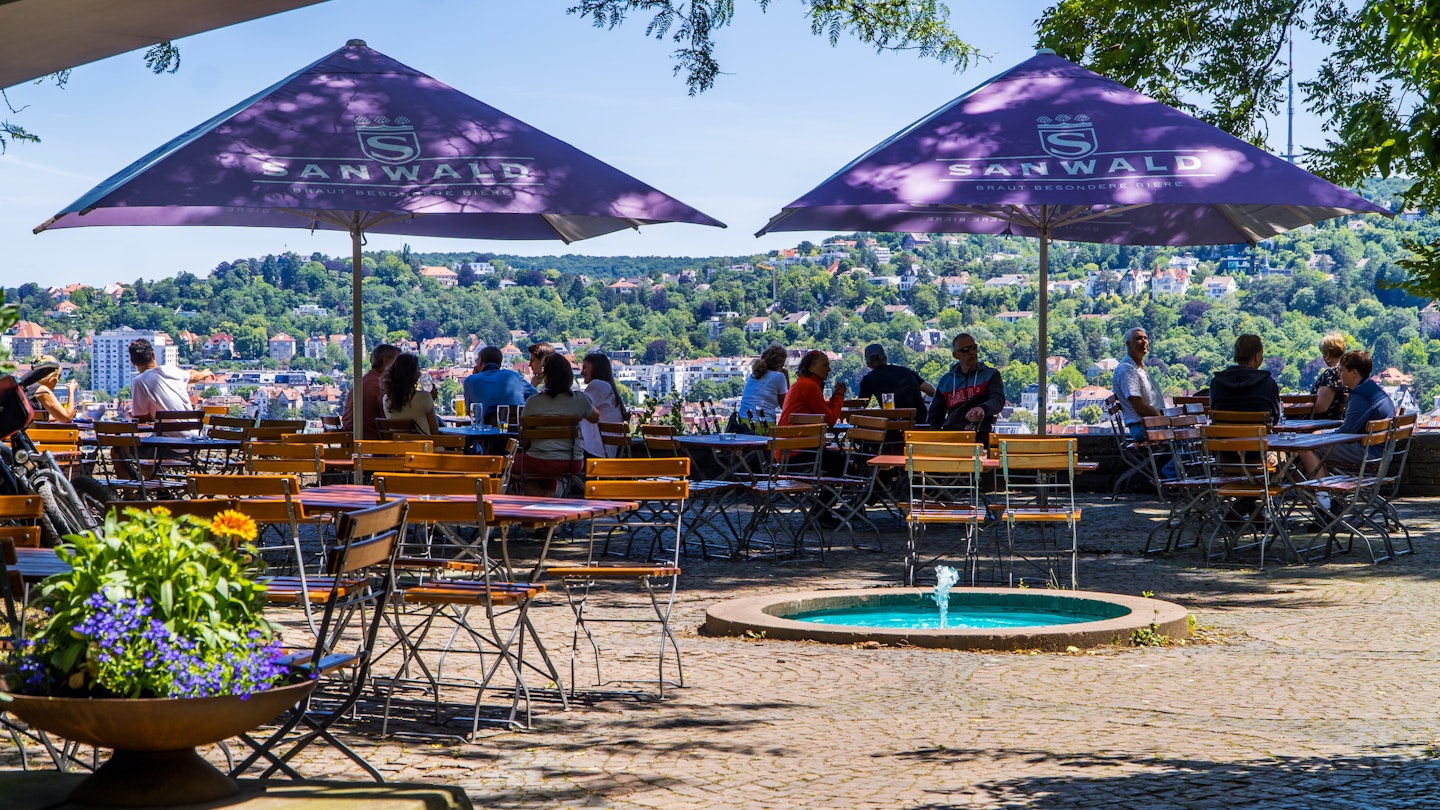Sundays in Stuttgart mean one thing: Sonntagsspaziergang (Sunday walk). This leisurely hike with friends or family is a great way to explore the surrounding forest and feel refreshed for the week ahead.
However, owing to Stuttgart’s location in the bottom of a valley, you’ll need to tackle a set of stairs on your way from the city to the forest. These staircases, known in the local Swabian dialect as Stäffele, are an indispensable part of Stuttgart’s urban landscape, both loved and loathed by out-of-breath locals.
Moreover, with over 500 Stäffele criss-crossing the city slopes, you will see them everywhere. So pack your boots; it’s time to start climbing.
History
Stuttgart is known as the Kessel (the cauldron or pot), based on its basin-like topography. The steep slopes and mild climate lend themselves to viticulture, and grapes have been grown here since the 12th century. To reach their vines from the city, vintners built cobbled staircases that ran up the hillsides.
As Stuttgart’s population rapidly expanded from the 19th century onwards, vines gave way to apartment buildings, shops, and roads. Nevertheless, many of these stairways remained, becoming part of Stuttgart’s modern landscape.
Today, the Stäffele provide quick access to apartments, hilltop beer gardens, upper suburbia, and the few remaining vineyards. Some are hidden, while others are obvious. Some are delightfully short, while others will whisk you 200m (656ft) up in a matter of minutes. If you walked all 500+, you would cover over 20km (12.4 miles). Thus, it’s not surprising that the people of Stuttgart are affectionately called Stäffelesrutscher (Stairway sliders)! The city invests around €300,000 per year in maintaining the staircases, ensuring they remain an icon for decades to come.

When did it become “a thing”?
The name Stäffele is a Swabian diminutive of the word Staffel, meaning stairs in southern Germany. In the 20th century, local poet Friedrich E. Vogt wrote a poem titled “Die steile stuegekter stäffele,” cementing their place in local folklore. In it, he rhymes:
Wenn Staugert koine Staffele hätt, no wäres koi Staugert meh, no wäreh seine Mädla net so schlank ond nett so schnee.
“If Stuttgart had no Stäffele, it wouldn’t be Stuttgart anymore; indeed, his girls wouldn’t be so slim and not so beautiful.”
Controversial, perhaps, but he might be onto something. Moreover, as well as being handy shortcuts, you’ll often see locals pounding up and down the steps, headphones on and calves burning as they get their daily workout in.
In fact, the Stäffele are so exhausting that Thomas Dold from nearby Baden used them as his training ground for the Empire State Building Run Up, a competition he won seven times.
Stairways to heaven
With over 50 officially named Stäffele and hundreds more remnants, private staircases, house steps, and vineyard steps, you can’t go far without stumbling across them. However, the views (and beer gardens) at the top make these six worth your while.
The Willy-Reichert-Staffel
This stairway doesn’t make the list simply for being the longest; it’s all about what awaits you at the top. Start near Marienplatz, and 408 meandering steps later, you’ll be rewarded with 360-degree views over the city below and a well-deserved beer in Stuttgart’s highest beer garden, Karlshöhe.
Sängerstaffel
The double-breasted ascents and descents, combined with the lush vine-covered buildings lining the stairways, make this one more about the journey than the destination. Head up to play a giant game of chess on the public board at the top or visit the impressive art museum located at the bottom.

Friedrich E. Vogt Stäffele
This stairway, named after our controversial poet, winds its way through some of Stuttgart’s most expensive homes. You’ll see art-deco stunners and leafy bourgeois villas lining the leafy streets.
Dobelstaffel
If you’re looking for the best view with minimal effort, head to Dobelstaffel. With only 104 steps, you’ll be rewarded with fantastic views over the tiled rooftops and the Birkenkopf – a hill made from the rubble and ruins left behind after WWII – in the background.
Fritz-Münch-Staffel
Named after a celebrated local tailor, this stairway rewards you with expansive views over the Lehen and Heusteig district on one side and the vineyards on the Alte Weinsteige on the other. It will also take you past “The Floor,” an award-winning house designed around a 150-year-old sequoia tree with a spectacular roof terrace that seems to float eight meters in the air, with one side perched on its elevator shaft.
Eugenstaffel
A local favorite, the Eugenstaffel heads straight up to the stunning Galatea fountain, featuring a bare-bottomed nymph standing at the top. Expect to see teens canoodling, kids enjoying ice cream from the popular Pinguin ice cream shop, and tourists checking out the impressive view.
There are also a number of guided tours, in both English and German, that offer more insight into the significance of the Stäffele to the city of Stuttgart.
Stuttgart Vs. Wuppertal (who does it best)?
Wuppertal, located 400 km (248 miles) north of Stuttgart in North Rhine-Westphalia, comes in a close second for the title of most city staircases. While Stuttgart’s official number sits between 500-600 depending on the source, Wuppertal boasts 500 staircases, of which 23 are protected as monuments.
Esslingen, a charming medieval wine-growing town just 20 km (12.4 miles) east of Stuttgart, also has a handful of cobbled stairways connecting the city with its hillside wineries.
Take it with you, or not
Leaving Stuttgart with tired legs and stunning photos of the city is probably the only memento you can take home. If you want to learn more, consider exploring local shops for unique souvenirs related to this vibrant city.





